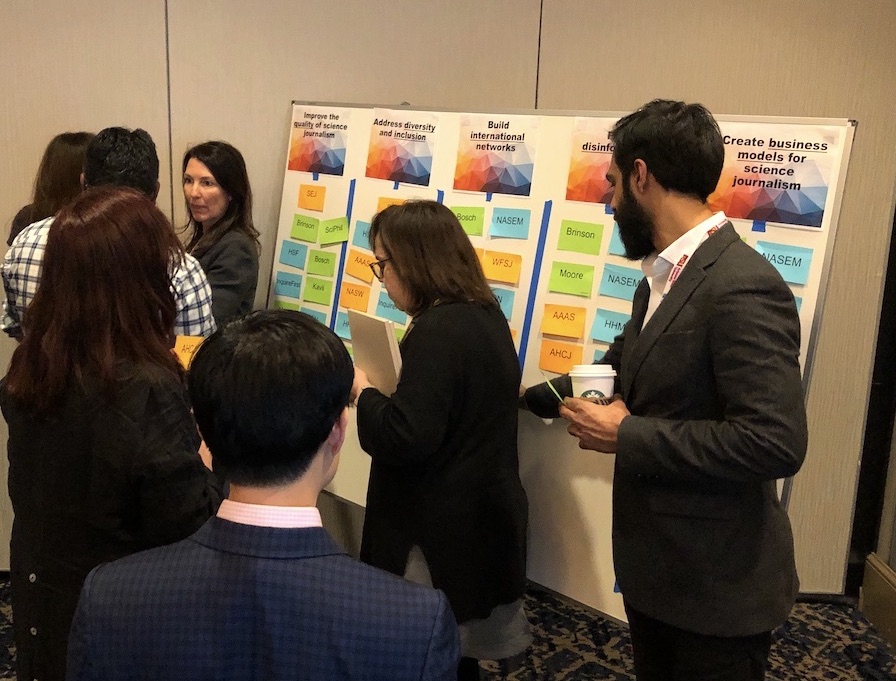
CASW convenes partners to discuss science journalism
Funders, professional associations, and nonprofits participate in a whiteboard exercise to help shape CASW’s new science journalism initiative.
Can science journalism be better? How can we ensure a strong future for the field, one that ensures that the most accurate science journalism possible serves diverse audiences and helps citizens put reliable findings to use?
These questions were front and center as CASW convened a gathering of funders, professional associations, and nonprofits February 13, during the annual meeting of the American Association for the Advancement of Science, in Seattle.
The gathering was planned as an early step in CASW’s new effort to focus on significant issues confronting science journalism as the Council marks its 60th anniversary. In a pre-event survey conducted with generous support from the Burroughs Wellcome Fund, Executive Director Rosalind Reid and Vice President Robin Lloyd asked key leaders to describe unmet needs and actions needed to strengthen science journalism in the 21st century. The respondents identified five urgent action areas:
- Improving the quality of science journalism through training, education, mentoring, ethics discussions, and more fact-checking.
- Addressing diversity and inclusion in science journalism’s career pipeline and reaching poorly served audiences.
- Building international networks to support cross-border reporting and serve the Global South.
- Fighting disinformation through advocacy for science journalism and public outreach.
- Creating sustainable business models for science journalism that address the needs of publishers, staffers, and freelancers.
At the Feb. 13 gathering, Lloyd laid out CASW’s concerns as well, noting that “today, the work of all journalists is undermined not only by the noisy signals in the media landscape, but also by the collapse of the legacy media economy.”
Thanking funders, associations, and nonprofits for their hard work in support of science communication, Lloyd summarized the survey results and asked the group to consider the particular issues confronting science journalism, including “the layoffs of thousands of experienced journalists… the influence of social media, declines in high-impact investigative and long-form journalism, and active disinformation campaigns that undermine the credibility of science and of journalism.” She also pointed to limited progress in training, hiring, and retaining talent reflective of the world’s ethnic and racial diversity.
“Science, health and environmental journalists take on the special duty of helping the public interpret scientific knowledge, so it can be put to use,” she said. “We also work to hold science as an institution accountable to society.” Lloyd noted that the survey respondents had embraced both roles as essential for society.
Attendees participating in a whiteboard exercise showed strong interest in addressing quality, diversity, and inclusion issues.
The Seattle gathering took place as the novel coronavirus spread rapidly in that city and began to disrupt the U.S. In the coming months, CASW will develop specific proposals through virtual conversations, including its annual board meeting set for later this month. Reid also plans to work with the Science Philanthropy Alliance and other organizations to initiate discussions of coordinated projects addressing goals of the new effort.
The pandemic, Reid said, underscores the crucial role of excellent science journalism in advancing global solutions and prosperity. “CASW and our partners are even more committed to a healthy, sustainable future for science journalism,” she said. “Science journalism is, and must be, a strong thread in the fabric of 21st-century society.”